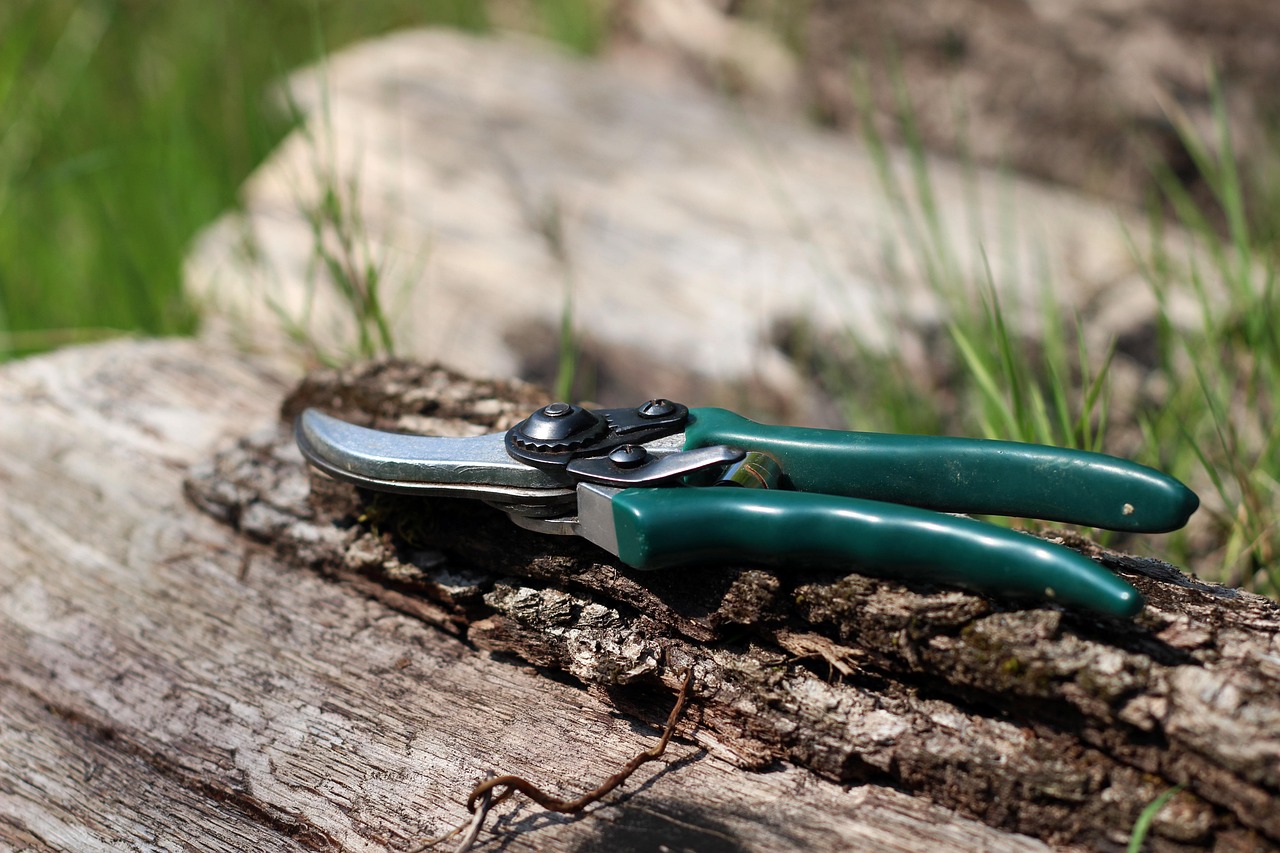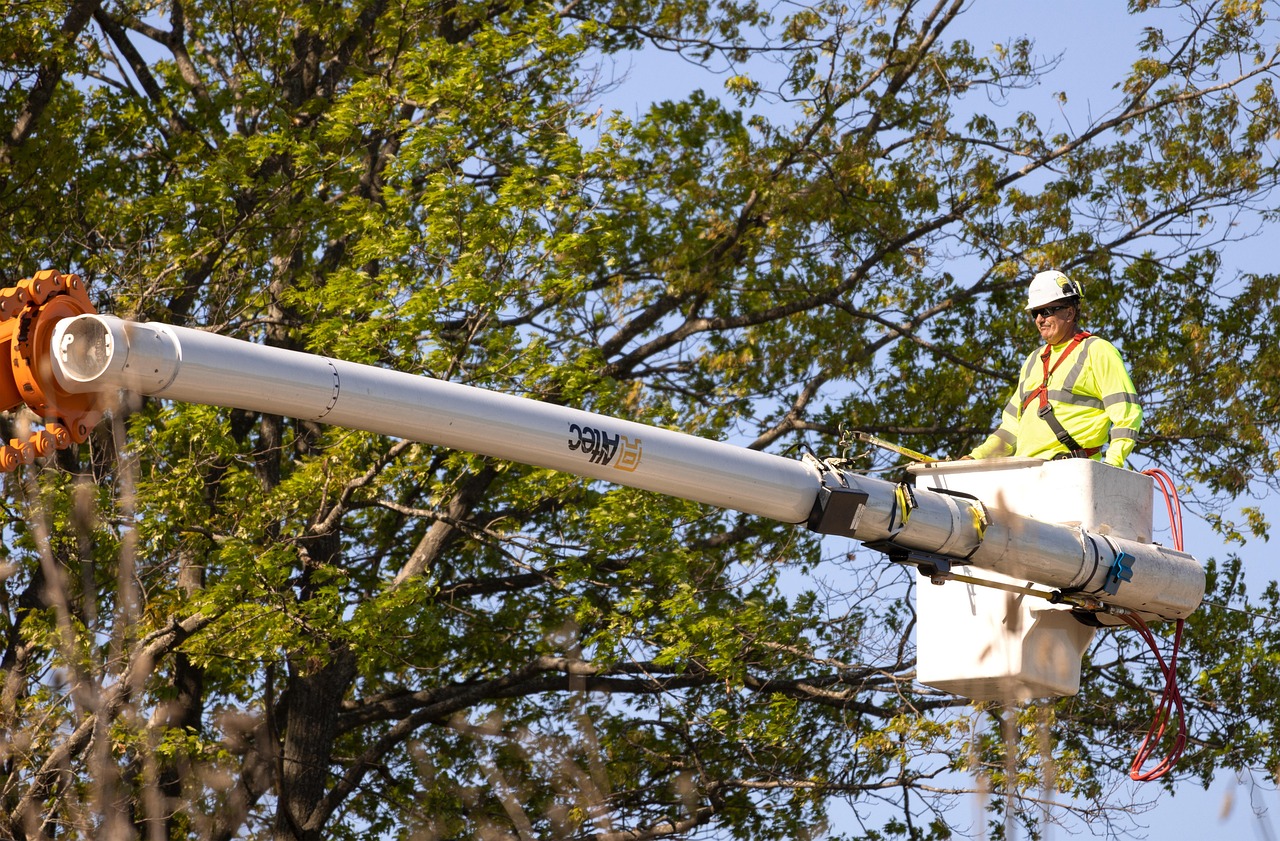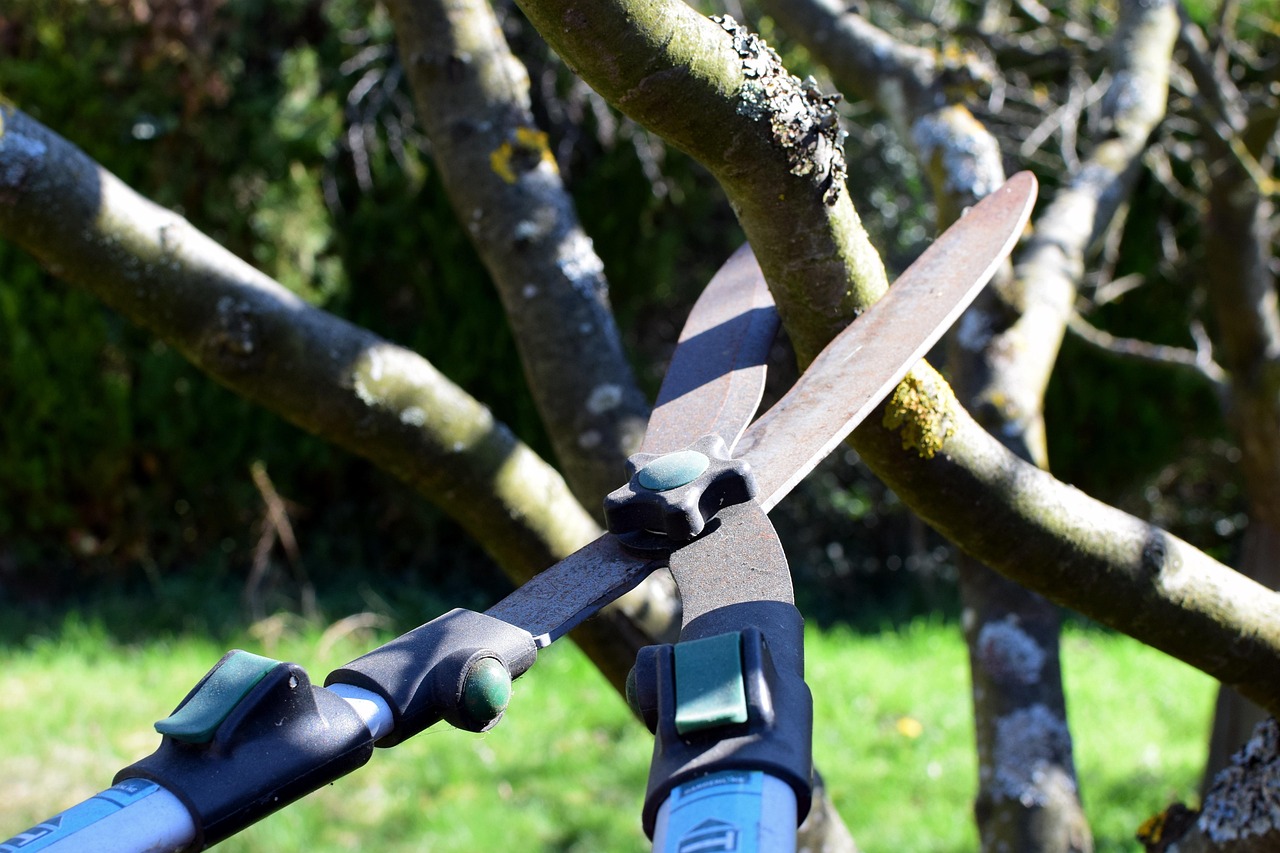Pruning ornamental trees regularly offers numerous benefits, including improved health, enhanced aesthetics, and increased safety. By removing dead or diseased branches, the overall structure of the tree is strengthened, promoting better growth and flowering.
Ornamental trees are often planted for their beauty and the unique character they bring to landscapes. They can enhance property value, provide shade, and contribute to the overall ecosystem. However, maintaining these trees is essential for maximizing their benefits. Regular pruning is a critical aspect of tree care that ensures they remain healthy and vibrant.

Pruning involves selectively removing branches and foliage. This process can be done for various reasons, including improving the tree’s shape, allowing more sunlight to reach lower branches, and reducing the risk of disease. Additionally, well-pruned trees can better withstand harsh weather conditions, such as high winds or heavy snowfall.
The Importance of Regular Pruning
Regular pruning helps maintain the health and appearance of ornamental trees. It encourages new growth, ensuring that the tree remains vigorous and lush. Below are some key benefits of regular pruning:
- Health Improvement: Pruning helps eliminate diseased or damaged branches. This action prevents the spread of pests and diseases throughout the tree.
- Enhanced Aesthetics: A well-pruned tree looks more attractive. Shaping a tree can enhance its natural beauty and create a more harmonious landscape.
- Increased Safety: Removing weak or overhanging branches reduces the risk of falling limbs that could cause injury or damage to property.
- Better Air Circulation: Thinning out dense branches allows better air circulation, which is crucial for preventing fungal infections.
In addition to these benefits, regular pruning can also lead to improved flowering and fruiting in certain ornamental species. For instance, many flowering trees benefit from light pruning, which encourages more blossoms in the following season.

| Benefit | Description |
|---|---|
| Improved Tree Health | Eliminates diseased or dead branches to promote healthy growth. |
| Enhanced Appearance | Shapes the tree for a more appealing look in the landscape. |
| Safety | Reduces hazards by removing weak or overhanging branches. |
| Increased Sunlight | Allows more light to penetrate the canopy, benefiting lower branches. |
The timing of pruning is equally important. Most ornamental trees benefit from pruning during their dormant seasons, typically in late winter or early spring. This timing allows the tree to heal quickly when it begins to grow again. However, some species may require different timing or techniques based on their specific growth patterns.
Understanding the right techniques for pruning is essential. Improper pruning can harm the tree rather than help it. Here are some general tips for effective pruning:
- Use sharp tools: Clean, sharp pruners make clean cuts that heal faster.
- Avoid topping: Cutting off the top of a tree can lead to weak growth and increased susceptibility to disease.
- Make proper cuts: Always cut just above a node or branch collar to promote healthy regrowth.
- Time it right: Prune at the correct time of year based on the tree species.
Regular pruning not only supports the health and growth of ornamental trees but also contributes to the overall beauty of your landscape. Homeowners who invest time in maintaining their trees will enjoy the rewards in aesthetics and safety for years to come.

The long-term advantages of regular pruning are clear. With proper care, ornamental trees can thrive, enhance your outdoor space, and provide enjoyment throughout their lifespan. Understanding these benefits is crucial for any homeowner or landscaper looking to create a stunning environment filled with healthy trees.
Common Mistakes in Pruning Ornamental Trees
While pruning is critical for the health of ornamental trees, many homeowners make mistakes that can harm their trees instead of helping them. Understanding these common pitfalls can lead to more effective pruning practices. Below are some frequent mistakes to avoid:
- Pruning Too Much: Over-pruning can stress the tree. It is vital to remove only a small percentage of the tree’s branches during each pruning session.
- Ignoring Tree Species: Different species have unique needs. It is essential to research the specific requirements and optimal pruning techniques for the type of ornamental tree.
- Not Cleaning Tools: Using dirty tools can introduce pests and diseases to the tree. Always clean and disinfect your pruning tools before use.
- Pruning at the Wrong Time: Pruning during the wrong season can hinder growth. Some trees should be pruned after flowering, while others benefit from winter pruning.
Signs That Your Ornamental Tree Needs Pruning
Recognizing when to prune your ornamental trees is essential for maintaining their health and beauty. Here are some signs that indicate it may be time for pruning:

- Dead or Diseased Branches: If you notice branches that are dead, discolored, or show signs of disease, they should be removed immediately.
- Overcrowded Canopy: If branches are growing too close together, it can prevent sunlight and air from reaching the inner parts of the tree.
- Weak or Cracked Branches: Branches that appear weak or are cracked pose a safety risk and should be pruned back.
- Pests and Infestations: If pests are visible on certain branches, pruning may help reduce their spread.
Seasonal Pruning: When Is the Best Time?
The timing of your pruning efforts can greatly influence the health of your ornamental trees. Understanding the seasonal needs is crucial for effective care. Here’s a breakdown of when to prune based on tree types:
| Tree Type | Best Pruning Time |
|---|---|
| Deciduous Trees | Late winter to early spring before new growth starts. |
| Flowering Trees | After flowering has finished, typically in late spring or early summer. |
| Evergreens | Late winter or early spring before new growth begins. |
| Fruit Trees | Late winter to early spring, but may vary based on specific species. |
This table provides a general guide, but always consider the specific needs of your tree species. Local climate conditions may also affect the optimal timing for pruning.
Benefits of Seasonal Pruning
Pruning at the right time of year offers various benefits for ornamental trees. Here are some advantages of seasonal pruning:
- Promotes Healthy Growth: Pruning during dormancy encourages vigorous growth in the spring.
- Enhances Flowering: Timing your cuts after flowering ensures that you do not remove buds that will bloom.
- Reduces Stress: Seasonal pruning reduces the stress on trees, allowing them to heal and recover more effectively.
- Aids in Disease Prevention: Pruning during dry seasons can help prevent fungal infections that thrive in moist conditions.
Tools for Effective Pruning
Using the right tools is essential for effective pruning. Here is a list of common tools used for pruning ornamental trees:
- Pruning Shears: Ideal for small branches and precise cuts.
- Loppers: Useful for cutting thicker branches that are too large for pruning shears.
- Saws: A hand saw or pole saw may be necessary for larger limbs.
- Hedge Trimmers: These can be used for shaping smaller ornamental trees and shrubs.
When using these tools, ensure they are sharp and clean. Dull tools can tear branches instead of making clean cuts, leading to potential damage and disease.
Maintenance After Pruning
After completing the pruning process, proper maintenance is crucial to ensure your ornamental trees continue to thrive. Consider the following maintenance tips:
- Watering: Ensure your trees receive adequate water after pruning. This helps them recover from the stress of cutting.
- Fertilization: Applying a balanced fertilizer may help support new growth after pruning.
- Pest Monitoring: Keep an eye out for signs of pests or disease in the weeks following pruning. Early detection is key to managing issues effectively.
By understanding these aspects of pruning ornamental trees, homeowners can foster a healthier landscape filled with vibrant and beautiful trees. The right knowledge and techniques will enhance not only the health of individual trees but also the overall beauty of the property.
Environmental Benefits of Pruning Ornamental Trees
Pruning ornamental trees not only benefits individual plants but also contributes positively to the environment. Healthy trees play a significant role in maintaining ecological balance. Here are some key environmental benefits associated with regular pruning:
- Improved Air Quality: Trees absorb carbon dioxide and release oxygen. Healthy trees, maintained through regular pruning, can maximize this process, helping to improve air quality.
- Climate Regulation: Trees help moderate temperatures by providing shade and releasing moisture into the air. Pruned trees can grow more vigorously, enhancing their cooling effects.
- Biodiversity Support: Healthy trees provide habitats for various species, including birds, insects, and small mammals. Pruning encourages a diverse ecosystem by promoting the growth of flowering and fruiting branches.
- Soil Health: The leaf litter from pruned trees contributes organic matter to the soil, improving its structure and nutrient content.
Pruning and Urban Landscapes
In urban areas, the role of ornamental trees is even more critical. They enhance the aesthetic appeal of neighborhoods and contribute to community well-being. Regular pruning is essential in these settings for several reasons:
- Space Management: In crowded urban environments, trees must be pruned to ensure they do not interfere with buildings, power lines, or pathways.
- Safety Concerns: Properly pruned trees reduce hazards posed by falling branches, especially during storms or high winds.
- Visibility and Light Entry: Pruning can enhance visibility on streets and sidewalks, making urban areas safer for pedestrians and drivers alike.
Pruning Techniques for Different Types of Ornamental Trees
Each type of ornamental tree may require different pruning techniques to ensure optimal health and appearance. Understanding these methods is vital for effective maintenance. Below are common techniques used for various tree types:
Crown Thinning
This technique involves selectively removing branches to increase light penetration and air circulation within the canopy. It helps maintain tree health while enhancing aesthetics.
- Best for: Deciduous trees, such as maples and oaks.
- Aim: Enhance light access without significantly altering the tree’s shape.
Crown Raising
Crown raising involves removing lower branches to increase clearance above the ground. This technique is particularly useful in urban areas where pedestrian traffic is a concern.
- Best for: Trees planted near walkways or streets.
- Aim: Ensure safe passage for pedestrians and vehicles.
Crown Reduction
This method reduces the overall size of the tree while maintaining its natural shape. It is often used for trees that have outgrown their space.
- Best for: Overgrown ornamental trees, such as flowering cherries.
- Aim: Maintain a manageable size while preserving tree health.
Understanding Tree Growth Patterns
To prune effectively, it is essential to understand how trees grow. Different species exhibit unique growth patterns that should guide pruning decisions. Here are some key growth characteristics:
| Tree Species | Growth Pattern | Pruning Recommendation |
|---|---|---|
| Japanese Maple | Slow-growing with delicate branches. | Light pruning in late summer after growth has stabilized. |
| Crape Myrtle | Rapid growth with multiple trunks. | Hard pruning in late winter encourages new blooms. |
| Flowering Dogwood | Moderate growth with dense foliage. | Thin out crowded branches after flowering to improve air circulation. |
| Pear Tree | Fast-growing with a broad crown. | Crown thinning in early spring promotes healthy fruit production. |
This table can serve as a quick reference for homeowners and landscapers to tailor their pruning techniques based on specific tree species. Understanding these patterns leads to better management of ornamental trees.
The Role of Professional Arborists
While many homeowners can manage basic pruning tasks, hiring a professional arborist can be beneficial for more complex situations. Arborists have specialized training and experience that provide several advantages:
- Expertise: Arborists understand tree biology and can identify issues that may not be visible to untrained eyes.
- Safety: Working at heights or near power lines poses risks; professionals are trained to handle these situations safely.
- Proper Techniques: Arborists are familiar with various pruning techniques tailored to specific tree species and health conditions.
By leveraging the expertise of professional arborists, homeowners can ensure that their ornamental trees receive the best possible care, leading to healthier and more beautiful landscapes.
Long-Term Care and Maintenance of Ornamental Trees
Maintaining ornamental trees is an ongoing commitment that extends beyond regular pruning. To ensure that these trees flourish for years, homeowners should adopt a comprehensive approach to care. Here are several key aspects of long-term maintenance:
- Regular Inspections: Schedule periodic assessments of your trees to check for signs of disease, pest infestations, or structural issues. Early detection can prevent more significant problems later.
- Watering Practices: Proper watering is essential, especially during dry spells. Newly planted trees may require more frequent watering until their root systems are established.
- Mulching: Applying mulch around the base of trees helps retain moisture, suppress weeds, and regulate soil temperature. It also adds organic matter to the soil as it decomposes.
- Fertilization: Regularly assess soil nutrients and apply fertilizer as needed. A balanced fertilizer can help support healthy growth and flowering.
- Pest and Disease Management: Stay vigilant in monitoring for pests and diseases. Implement appropriate management practices, which may include natural solutions or, if necessary, chemical treatments.
Seasonal Care Tips
Seasonal changes can affect the needs of ornamental trees. Here are specific tips for each season:
- Spring: This is a crucial time for pruning and fertilizing. As trees begin to grow, ensure they have adequate nutrition and remove any dead or diseased branches.
- Summer: Monitor for pests and water during dry spells. Prune any overgrown branches to maintain shape and health.
- Fall: Prepare trees for winter by applying mulch and ensuring they are well-watered. This is also a good time to assess tree structure before the dormant season.
- Winter: Conduct dormant pruning to shape trees and remove any problematic branches. Take this time to plan for the upcoming growing season.
The Economic Value of Pruning Ornamental Trees
Pruning ornamental trees not only contributes to their health but also creates economic value for homeowners and communities. Here are some key aspects of this value:
- Increased Property Value: Well-maintained ornamental trees enhance curb appeal, which can lead to higher property values. Potential buyers are often more attracted to homes with beautiful landscapes.
- Reduced Energy Costs: Trees that provide shade can reduce cooling costs during hot months. Well-pruned trees allow for better airflow, which can also reduce heating costs in winter.
- Lower Maintenance Costs: Regular pruning prevents larger problems that may require costly interventions. By maintaining tree health, homeowners can save on future expenses related to tree removal or disease treatment.
Community Benefits
The benefits of pruning ornamental trees extend beyond individual properties to the community level. Healthy urban forests contribute to:
- Improved Mental Health: Green spaces and well-maintained trees provide psychological benefits, promoting relaxation and reducing stress.
- Increased Biodiversity: Attractive landscapes encourage wildlife, supporting local ecosystems and promoting biodiversity.
- Community Engagement: Pruning programs can foster community involvement through volunteer opportunities, educational workshops, and collaborative landscaping efforts.
Conclusion
Regular pruning of ornamental trees is essential for their health, aesthetics, and overall contribution to the environment. Homeowners who invest time in proper pruning practices will reap numerous benefits, including improved tree vigor, enhanced property value, and a safer landscape. Understanding the importance of timing, techniques, and ongoing tree care will ensure that these beautiful trees thrive for generations.
The integration of professional arborists into the care routine can further enhance the outcomes, providing expertise that is invaluable for maintaining tree health. With a commitment to regular maintenance and informed practices, ornamental trees can significantly enrich our lives, providing beauty, shade, and ecological benefits while creating vibrant communities. Embracing this knowledge allows homeowners to cultivate stunning landscapes filled with healthy ornamental trees that elevate both personal spaces and the environment as a whole.
